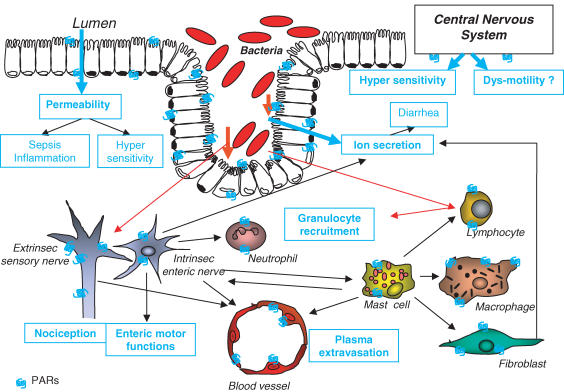Figure 3.
Interactions of PARs with components of the pathogenesis of IBS. PAR1 and PAR2 are present on enterocytes, where their activation potentially induces an increase in permeability, which could lead to bacterial translocation, sepsis and inflammation, as well as hypersensitivity. Direct activation of PAR1 and PAR2 on enteric neurons interferes with nociceptive and motor functions. Activation of PARs on cells involved in inflammatory responses (mast cells, neutrophils, lymphocytes, macrophages, fibroblasts, endothelium or neuropeptides containing neurons) could lead to the generation of inflammatory mediators and provokes further signs of inflammation such as granulocyte recruitment and plasma extravasation. Ion secretion and potentially water flux disturbances (diarrhea) could be evoked by PAR activation on enterocytes, fibroblasts or enteric nerves. PAR activation in the central nervous system modulates nociceptive responses to peripheral stimulation, playing a potential role in hypersensitivity states and eventually (although never studied) in enteric motor dysfunctions. Activation of PARs on enterocytes, enteric neurons or lymphocytes by bacterial proteases from luminal or infiltrated pathogens could also participate in the generation of symptoms associated with IBS.

